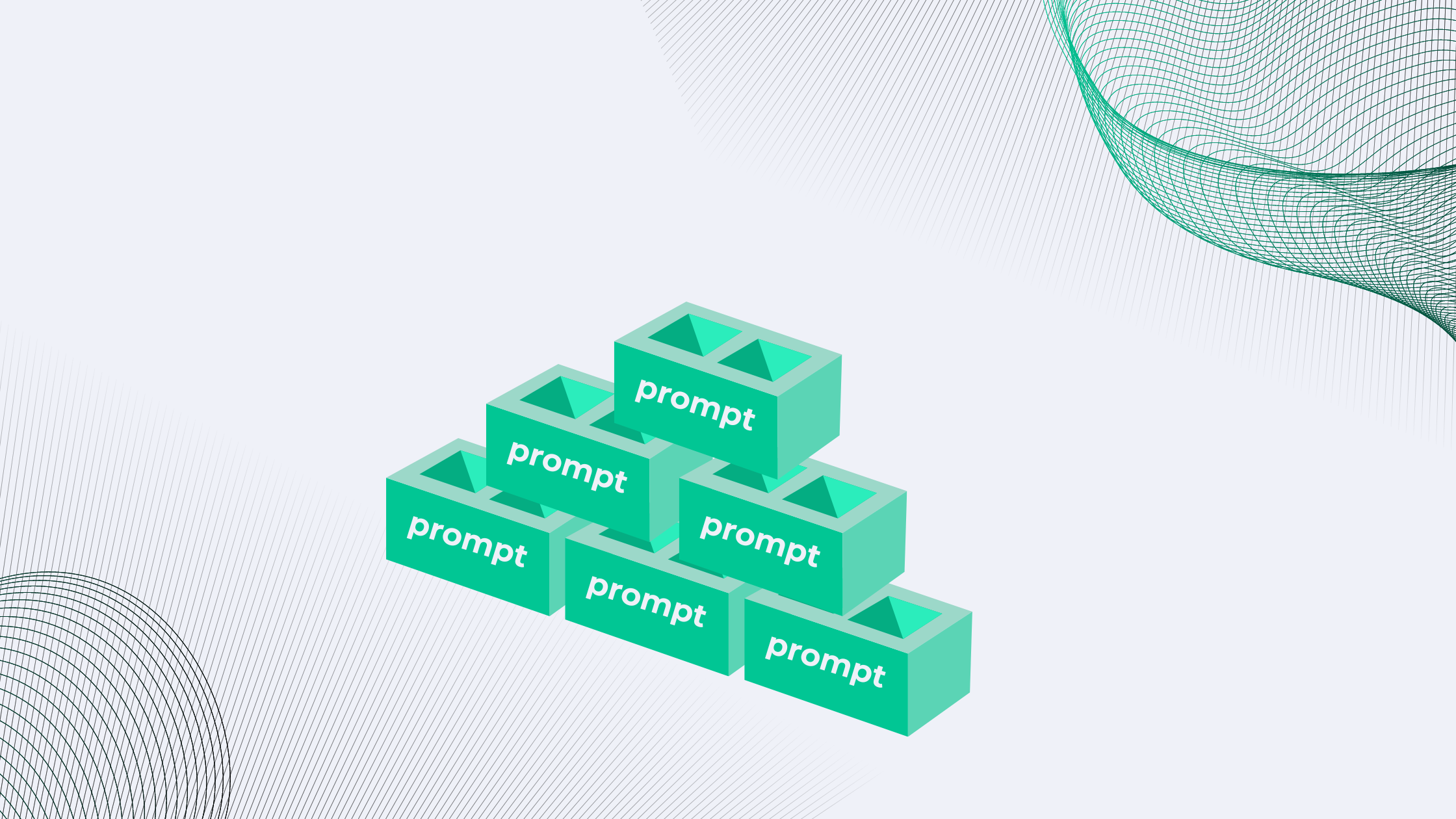From Rigid Structures to Fluid Intelligence: The Fall of Taxonomies and the Rise of AI The way we...
Mastering the Art of Prompt Engineering
As artificial intelligence (AI) becomes increasingly integrated into the world of associations, professionals must learn how to effectively communicate with and leverage these powerful tools. Prompt engineering, the art of crafting input text that elicits the desired output from an AI system, is a crucial skill in this regard. In this blog post, we'll dive deep into the concept of prompt engineering, explore various techniques, and discuss how mastering this skill can help you unlock the full potential of AI in your association.
Understanding Prompt Engineering
At its core, prompt engineering is the process of designing and optimizing input text prompts to guide AI models towards generating more relevant, accurate, and useful outputs. It's about learning how to communicate with AI effectively to maximize its performance and align its outputs with your specific needs and goals.
Effective prompt engineering is particularly important when working with large language models like GPT-3 or GPT-4, which are trained on vast amounts of text data and can generate a wide range of outputs based on the input they receive. By carefully crafting your prompts, you can steer these models towards producing the most valuable responses for your association, whether you're generating content ideas, analyzing member feedback, or providing personalized recommendations.
Key Techniques for Effective Prompt Engineering
1. Instruction Prompting
Instruction prompting is a straightforward but powerful technique that involves providing clear, specific instructions to the AI model about what you want it to do or generate. The key to making this technique work is to be as precise and unambiguous as possible, leaving little room for misinterpretation.
Example: "Generate a 150-word summary of the key takeaways from our recent webinar on diversity and inclusion in the workplace. Focus on the three main action items discussed by the panelists."
Why it works: By providing detailed instructions, you help the AI model understand exactly what you're looking for in terms of content, format, and focus. This technique is particularly effective for tasks that require specific outputs, such as generating summaries, creating ad copy, or answering targeted questions.
Tips for success:
- Be specific about the desired length, format, and style of the output
- Clearly state the main points or topics you want the AI to focus on
- Use simple, direct language to minimize ambiguity
2. Role-Based Prompting
Role-based prompting is a technique that assigns a specific role or persona to the AI model to guide its outputs. By framing the prompt as if it were addressed to a particular type of expert or professional, you can tap into the model's knowledge and language patterns associated with that role, resulting in more focused and relevant responses.
Example: "Act as a membership engagement specialist for a professional association. Provide three strategies for increasing member participation in virtual events, along with examples of how each strategy could be implemented."
Why it works: Role-based prompting helps the AI model focus on generating content from a specific perspective or area of expertise. By providing a clear role or persona, you can steer the model towards producing outputs that are more relevant and actionable for your association's needs.
Tips for success:
- Choose a role or persona that aligns closely with the task at hand
- Provide enough context about the role to help the AI model generate relevant outputs
- Be specific about the type of content or insights you're looking for (e.g., strategies, examples, recommendations)
3. Contextual Prompting
Contextual prompting involves providing sufficient background information, constraints, or examples in your prompt to help the AI model better understand your association's specific needs and expectations. By including relevant context, you can guide the model towards generating more tailored and effective outputs.
Example: "Our association represents marketing professionals, with a focus on digital marketing trends and best practices. We have 10,000 members worldwide. Draft a promotional email for our upcoming virtual conference, highlighting the keynote speakers and the benefits of attending for our members."
Why it works: Contextual prompting helps the AI model understand the unique characteristics, goals, and audience of your association. By providing this information upfront, you enable the model to generate content that is more closely aligned with your organization's needs and resonates with your target audience.
Tips for success:
- Include key details about your association, such as industry, size, and focus areas
- Specify the target audience for the generated content
- Provide any relevant constraints or guidelines, such as desired tone, length, or format
4. Iterative Prompting
Iterative prompting is a technique that involves refining your prompts based on the AI model's outputs. By reviewing the generated content and identifying areas for improvement, you can create more targeted prompts that progressively guide the model towards the desired output.
Example: "Thank you for the draft of the social media post promoting our new research report. Can you please revise it to include a more compelling hook in the first sentence and a clear call-to-action for readers to download the full report?"
Why it works: Iterative prompting allows you to fine-tune the AI model's outputs by providing feedback and guidance based on its initial results. This technique is particularly effective for tasks that require multiple rounds of refinement, such as writing blog posts, creating marketing copy, or developing detailed reports.
Tips for success:
- Review the AI-generated content carefully and identify specific areas for improvement
- Provide clear, actionable feedback in your follow-up prompts
- Be patient and willing to iterate multiple times to achieve the desired output
5. Multi-Step Prompting
Multi-step prompting is a technique that breaks down complex tasks into smaller, more manageable steps. By guiding the AI model through a series of related prompts, you can help it generate more comprehensive and coherent outputs.
Example: "Let's create a blog post on the top trends shaping the future of our industry. First, generate a list of five key trends based on our recent survey data. Then, for each trend, provide a brief explanation and a real-world example of how it's impacting organizations in our field. Finally, conclude with a summary of the overall implications for professionals in our industry."
Why it works: Multi-step prompting enables the AI model to tackle complex tasks by breaking them down into smaller, more focused components. This technique helps ensure that the generated content is well-structured, comprehensive, and logical, as each step builds upon the previous one.
Tips for success:
- Break down the task into clear, logical steps
- Provide specific instructions and context for each step
- Use the outputs from previous steps to inform and guide subsequent prompts
The Betty Bot Advantage
While prompt engineering techniques can be highly effective for generating relevant and valuable content using AI, it's important to recognize that they may not always be necessary, especially when working with specialized AI tools like Betty Bot.
Betty Bot is an AI-powered knowledge assistant designed specifically for associations. By training on an association's unique knowledge base and industry-specific data, Betty Bot can provide accurate, relevant, and contextually appropriate responses without the need for extensive prompt engineering.
This specialization offers several key benefits:
- Reduced time and effort: With Betty Bot, association professionals can spend less time crafting complex prompts and more time focusing on high-value tasks that drive member engagement and organizational success.
- Improved accuracy and relevance: By leveraging its deep understanding of an association's specific needs and context, Betty Bot can generate outputs that are more closely aligned with the organization's goals and audience preferences.
- Seamless integration: Betty Bot can be easily integrated into an association's existing knowledge platforms, allowing members to access valuable insights and support without the need for extensive training or technical expertise.
While prompt engineering techniques can be powerful tools for leveraging AI in associations, the specialized capabilities of Betty Bot offer a more streamlined and efficient approach to harnessing the power of AI for member engagement and organizational success.
The Road Ahead
Mastering the art of prompt engineering is essential for association professionals looking to unlock the full potential of AI in their organizations. By understanding and applying techniques such as instruction prompting, role-based prompting, contextual prompting, iterative prompting, and multi-step prompting, you can guide AI models towards generating more relevant, accurate, and valuable outputs.
However, it's important to recognize that prompt engineering is just one approach to leveraging AI in associations. Specialized tools like Betty Bot offer a more streamlined and efficient way to harness the power of AI, reducing the need for extensive prompt engineering while still delivering accurate, relevant, and contextually appropriate responses.
As you explore the potential of AI for your association, consider the unique needs and goals of your organization, and choose the approach that best aligns with your resources, expertise, and desired outcomes. Whether through prompt engineering or specialized tools like Betty Bot, the power of AI is within reach – and the possibilities for transforming member engagement and driving organizational success are endless.
.png?width=173&height=70&name=Betty_RGB%201%20(1).png)



